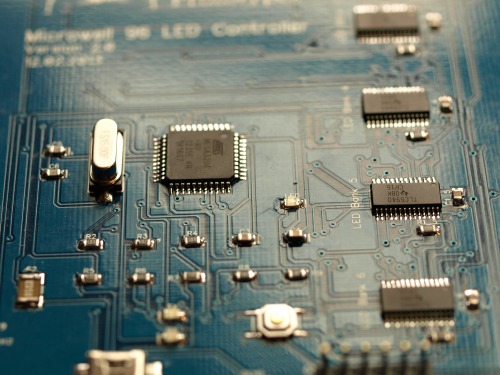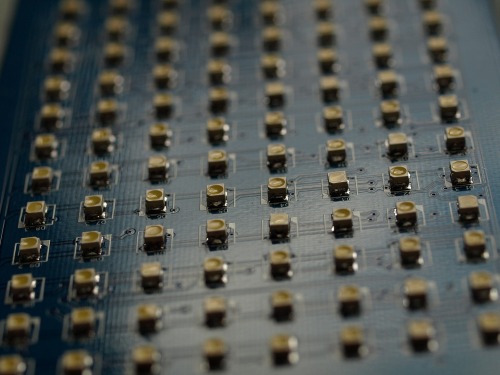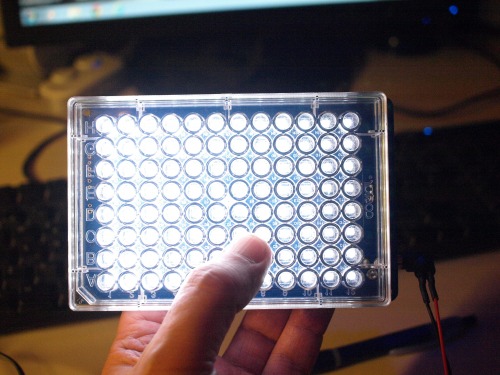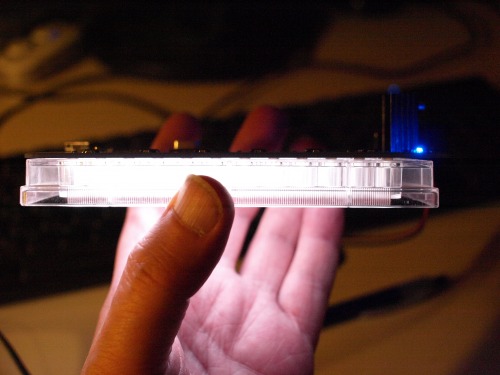Led_driver_V2_1.pdf (53212Bytes)
Led_driver_V2_2.pdf (32149Bytes)
In his research my brother needed to accurately control 96 LED’s on top of an Microwell plate. He had a similar setup earlier but wasn’t completely happy with it as it had the Arduino attached by wires and not as a shield. But instead of building it as a shield I added the ATMEGA directly onto the board so everything is self-contained. The board registers as an Arduino Leonardo and can be programmed via the mini USB plug. Integrated is also a sensor for calibrating each LED. I had great fun laying out the PCB in DipTrace but I’m now up to the free limit of 500 pins (we get extra pins as LMR members!)
The code running is a demo program for the TLC5940 LED controller.




https://www.youtube.com/watch?v=10p-dMq_yhI
It seems you’re always doing
It seems you’re always doing a great project when your brother is in need of something. Good to have such a brother. Did you populate the board by yourself or did you use an according service?
The board is populated and
The board is populated and hand soldered by my self 
**nice! **
Very nice… I could use something like that in my own biology experiments… I don’t suppose you have any extra PCBs you’d sell, or are you willing to share the PCB design file?
Thanks!
Ike
Funny that you should ask,
Funny that you should ask, but I’m in the process of redesigning the board using the TLC59116 LED driver and a regular ATMEGA328P-AU with an onboard FTDI driver.
The reason for this redesign is that we had some issues with the ATMEGA32U4-AU and getting the PC’s to recognize this as a valid USB device. Some PC’s had no issues others it was a no go.
We also changed the LED driver as the TLC5940 was a pain to work with, at least with the ATMEGA32U4-AU and we had to bit-bang the data.
But if you want I can send you a blank PCB from the old design. But you need some SMD experience as the TLC5940 is a small pitch (0.65mm) package. I would need to charge you for the shipping though.
Thanks for the kind
Thanks for the kind offer. I might need to wait until the next iteration - the bit-banging concept sounds a little daunting! What kind of LEDs are you designing the next board for?
The LEDs are the same
The LEDs are the same http://no.farnell.com/vishay/vlmw41s1t1-5k8l-18/led-smd-plcc2-white/dp/1648562
I can’t promises you a free board from the new batch. I order the PCB’s in stacks of 5 and the 15 I’m planning to build is already ordered. So if I get an extra PCB (it happens) you might get it.
Thanks - that makes sense.
Thanks - that makes sense. No worries if there’s no extra. Good luck with the new designs. I hope you’re not hand soldering all those again!
Doing something similar
Hi Geir;
A nice piece of work!
I’ve just come across your project since I am also developing a board using the Atmega running arduino script, with the TLC59116F to control 21 LEDs, and I am also using Diptrace.
I have a couple of questions.
I see you have tied the LEDs directly to the 5V rail, rather than use series resistors per LED or a single ballast resistor for all. I am considering doing the same but I have concerns about slight voltage mismatches between the LEDs and also the Von voltages…did you experience any problems by doing this?
Did you experience any pitfalls with connecting the I2C drivers to the Atmega?, was it almost plug and play or is there anything I should look out for?
Do you know if there is a diptrace library available that contains the TLC59116F
many thanks in advance, I do like your project, very well executed.
Jon








